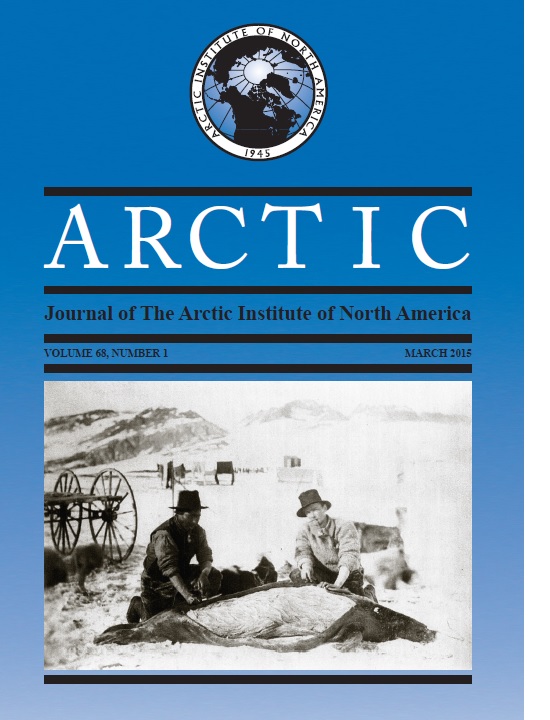Multidecadal Recession of Grinnell and Terra Nivea Ice Caps, Baffin Island, Canada
DOI:
https://doi.org/10.14430/arctic4461Ключевые слова:
glaciology, glacier change, climate, Grinnell and Terra Nivea ice caps, Baffin IslandАннотация
Multi-temporal satellite imagery and historical aerial photography reveal that two southern Arctic ice caps on Baffin Island have shrunk considerably over the past several decades. Satellite remote sensing shows that over the past three decades, the Grinnell and Terra Nivea ice caps, the southernmost ice caps in the eastern Canadian Arctic, have decreased in area by 18% and 22% respectively, which corresponds to a total area decline of 68 km2 since the inventory done in the late 1950s. Cumulative ice loss since the mid-1970s has occurred at a rate of −1.69 km2/yr. The Grinnell ice cap has declined in area by −0.57 km2/yr, while the larger Terra Nivea ice cap has lost ice at a rate of −1.1 km2/yr. Interior thinning has led to the exposure of nunataks far from ice margins, and outlet glaciers have retreated substantial distances up-valley. The rapid reduction in ice area is linked directly to increasing summer air temperatures and suggests that these ice caps are in disequilibrium with current climate. Projections suggest that if the observed ice decline continues to AD 2100, the total area covered by ice at present will be reduced by more than 57%.Загрузки
Опубликован
2015-02-23
Выпуск
Раздел
Articles


